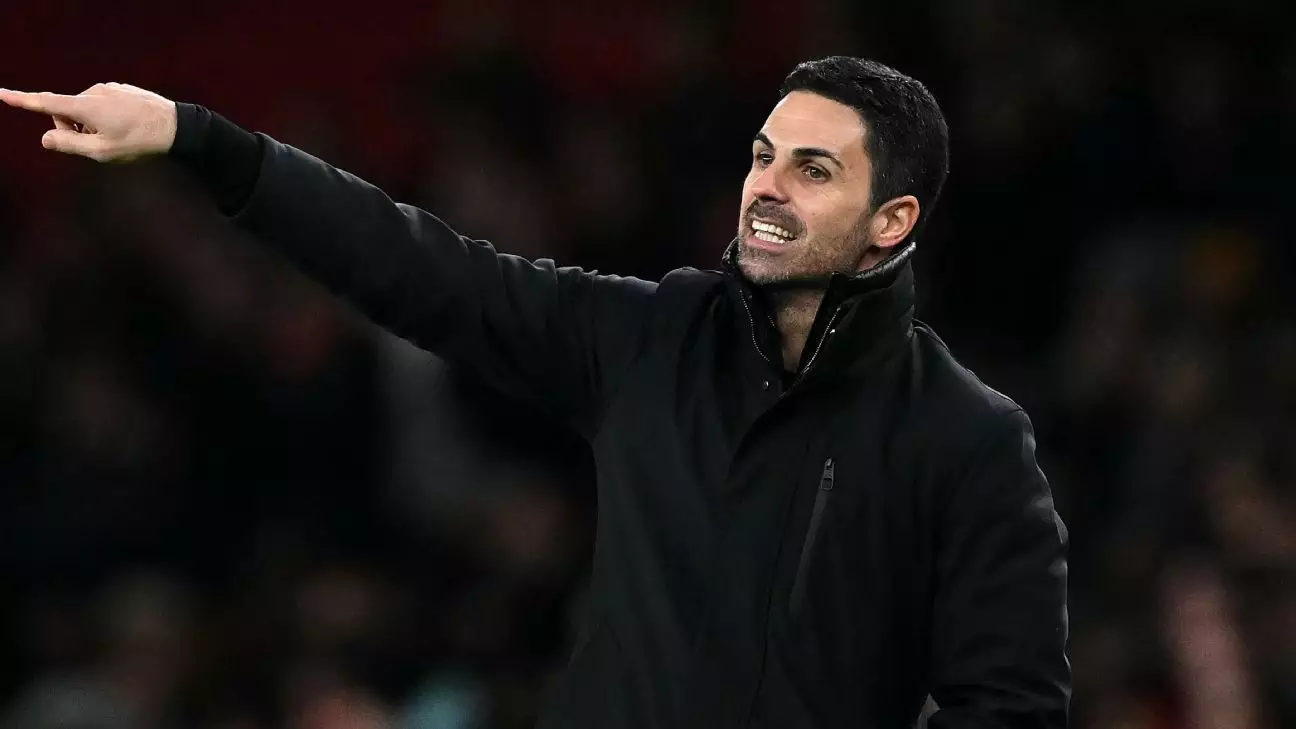Arsenal’s recent 2-0 defeat in the Carabao Cup semifinal against Newcastle United has left fans and analysts contemplating what went wrong for the Gunners. With goals from Alexander Isak and Anthony Gordon positioning Newcastle in a strong spot ahead of the second leg, Arsenal must now regroup and reflect on a dismal performance where they squandered numerous scoring opportunities. Notably, their expected goals (xG) figure of 3.12 is the highest recorded by any Premier League team this season without a goal—highlighting a shocking gap between performance metrics and actual results.
The Influence of a Different Ball
In the aftermath of the match, Arsenal manager Mikel Arteta pointed to the adjustments necessary for the players to adapt to the Carabao Cup’s distinctive ball as a contributing factor to the disappointing outcome. In his remarks, Arteta implied that the switch from the regular Nike ball to a Puma ball significantly disrupted their rhythm and accuracy, making it challenging for the team to convert opportunities into goals. His observations underline a broader issue in football regarding how marginal changes in equipment can significantly affect player performance.
Arteta was quoted discussing the unique characteristics of the competition’s ball, emphasizing its propensity to “fly a lot,” suggesting that players need to recalibrate their shooting techniques to accommodate the ball’s different grip and flight patterns. It raises questions about the mental preparedness of players when faced with such alterations in their playing environment. Arteta expressed his commitment to coaching and supporting the team through this transition, recognizing that addressing these technicalities could be instrumental in overcoming future hurdles.
The dialogue surrounding the issue of match balls is not new. Arteta himself was part of Manchester City’s coaching team during a significant moment in 2017 when Pep Guardiola criticized the performance of another cup ball. His complaints illustrated a shared sentiment among managers regarding equipment variance in knockout competitions. This historical context emphasizes that the complaints about cup balls are not isolated incidents but rather part of an ongoing conversation in professional football about consistency in match conditions.
Despite issuing these critiques, governing bodies like the EFL defend their product, confirming that all match balls meet FIFA’s rigorous technical standards. The lack of a tangible resolution to complaints about ball performance raises concerns about player adaptability, focusing on why clubs are not consistently prepared for such competition-specific challenges.
As Arsenal gears up for the return leg of the semifinal, the focus will not just be on overcoming Newcastle’s advantage but also on recalibrating their approach to the game—factoring in Arteta’s reflections on adaptability. For Arsenal, success will hinge not merely on technical execution against a quality opponent but also on mental resilience in the face of external variables like equipment changes. As Arteta noted, the key now is to shift from reflection on past mistakes to forging a strategy focused on future success.


Leave a Reply